Table of Contents
This article is going to help you decide between the two high-end hardware platforms available for performance/gaming laptops in 2022 and later into 2023, the AMD Ryzen 9 6900HX (Rembrandt platform) on one side, and the Intel Core i97-12900H (12th-gen Alder Lake platform) on the other.
This analysis is based on our detailed reviews of these two processors in a couple of different designs. I’m mostly going to focus on two very similar ROG laptops with the same kind of storage, RAM, and Nvidia graphics, as well as almost the same cooling module. This allows us to discuss the CPUs’ capabilities without having to account for other variables that could not be controlled if we’d compare these two platforms in different products.
We’re able to analyze the two CPUs and their behavior on benchmarks, workloads, and games, but we’re also discussing the efficiency of the two platforms and the differences in thermals between the two in demanding loads.
However, I’ll also include a couple of other implementations of the Ryzen 9 6900HX and the Intel Core i9-12900H hardware, to offer a broader range of samples and better showcase the performance differences between them, based on the power and cooling capabilities of each unit.
The two similar designs that we’re looking at are the Asus ROG Strix G15 and the Asus ROG Scar 15, both 2022-generation 15-inch laptops built on the same chassis, and with minimal differences that can affect the hardware’s performance (more specifically, extra RAM and a different kind of thermal compound used on the Intel model). Here are our detailed review for the two:
- ROG Strix G15 (Ryzen 9 6900HX, RTX 3070Ti 150W + MUX, 16 GB DRR5 memory – two sticks, 1 TB gen4 SSD, 90Wh battery).
- ROG Scar 15 (Intel Core i9-12900H, RTX 3070Ti 150W + MUX, 32 GB DRR5 memory – two sticks, 2 TB gen4 SSD, 90 Wh battery).
AMD Ryzen 9 6900HX vs.Intel Core i9-12900H specs sheets
Here’s a quick look at the specs sheets of these two processors, before we jump to the actual technical comparison.
| AMD Ryzen 9 6900HX – Rembrandt 6000 Zen3+ | Intel Core i9-12900H – Alder Lake 12th gen | |
| Build process | 6 nm TSMC FinFET | Intel 7 – 10 nm Enhanced SuperFin |
| TDP | 45+W | 45+W |
| Cores/Threads | 8C/16T | 6P + 8E/20T |
| CPU Turbo – All Cores | 4.2 GHz | 4.4 GHz (P cores) |
| CPU Turbo – 1 Core | 4.9 GHz | 5.0 GHz (P cores) |
| Cache | 16 MB | 24 MB |
| Memory |
DDR5, up to 64 GB 4 memory channels |
DDR4 and DDR5, up to 64 GB 2 memory channels |
| Graphics | Radeon 680M, RDNA2 | Intel Iris Xe |
You shouldn’t really concern yourself with the technicalities here, what’s important is to understand the design differences between the two processors.
On one hand, the Ryzen 9 6900H is a refinement of the Ryzen 9 5900H processor from 2021, now built on the refined 6nm Zen3+ process. This allows for a slight increase in IPC performance, slightly higher CPU Turbo frequencies, and improved efficiency on battery power compared to the Ryzen 5000 platform.
More importantly, this AMD Ryzen 9 generation bundles the powerful RDNA2-based Radeon 680M iGPU, replacing the Vega iGPUs of the past. This aspect is not relevant on full-size laptops, as those implement dedicated graphics, but is something to consider in your decision if you’re looking at an ultraportable Ryzen 9 design without a dGPU – there aren’t many of those, though.
On the other hand, the Intel Core i9-12900H processor is a major update of the previous Intel platforms, now a hybrid design with 6 Performance Cores and 8 Efficiency Cores, built on Intel’s 7 Enhanced SuperFin process. The E Cores add up to the performance of the P Cores in demanding loads, while also allowing for efficiency on battery use. As you’ll see from our tests, they make a noticeable difference in sustained demanding CPU loads, but the efficiency on battery use varies greatly between the different implementations, most likely due to the differences in software on each model.
Overall, efficiency is still the attribute of the AMD platform, but Intel has a notable edge in daily and sustained performance now. Plus, with the Intel notebooks, you’re still getting a few extra perks such as Thunderbolt 4 support or Quick-Sync, which can impact your productivity. Furthermore, the offer for high-tier AMD Ryzen 9 laptops is still more limited than the multitude of Intel Core i9 options.
AMD Ryzen 9 6900H vs. Intel Core i9-12900H benchmarks
As far as our ROG review units go, both allow high-power settings in sustained CPU loads, and both utilize Dynamic Boost to shift power from the CPU to the GPU in combined loads when needed. Both are also MUX-capable designs, and overall both are some of the better high-tier laptop designs available in stores, on par with counterparts such as the Alienware m series, Acer Predators, Lenovo Legions, or HP Omens.
I must add that while these ROGs are very similar internal designs, there are two small differences between them, which will minorly impact our findings: there’s 32 GB of RAM on the Intel model, and only 16 GB on the AMD model, and Asus implemented a superior thermal compound on the Intel model. There’s liquid metal on both, just a newer kind of liquid metal on the Scar 15. Even so, this comparison of the two platforms is as close as it can be.
With that out of the way, let’s discuss performance.
We’ll first go over the sustained CPU performance in the Cinebench R15 loop test, which runs the same test for 15+ times in a loop, with 1-2 sec delay between each run.
On Turbo, the top-performance profile, the Intel platform has a 20% advantage over the AMD hardware at peak power in the first run, which then stabilizes at around 15% sustained.
That’s partially due to the extra Cores/Threads and processing capabilities of the i9-12900H processor, but also due to the fact that the Intel processor runs at ~110W of stabilized power, while the AMD model runs at 90W. However, at 90W the Ryzen 9 already delivers the maximum possible performance, so there’s no need for it to run at higher power, while the i9 could squeeze a few percents faster results if supplied with even more power.
The gap between the two diminishes to about 7% on the Performance profile, with both units running at 70W of power in this mode.
Finally, there’s the Silent mode, where the AMD platform wins by a major margin, but it also runs at higher power than the Intel model (45W vs 30W). That’s most likely due to the difference in software settings at the times we’ve reviewed the two (we tested the Intel model earlier in the year). Nonetheless, the AMD platform would have an advantage over the Intel hardware anyway if both were to run at 45W of power.
You’ll find detailed performance logs for both units in our reviews. In here, I’ll just include Cinebench R15 and Blender Turbo mode logs with the laptops sitting on the desk. Both processors run at ~95 degrees Celsius on these modes and have the same fan speeds (46 dBA at head-level), but the Intel model runs at 15-25W higher power.
And here are a couple more Ryzen 9 6900HX and Core i9-12900H models in this same test, to verify our findings on these ROG platforms.
Finally, here’s how these two 2022 platforms fare in this stress test against their predecessors from 2021, the Intel Core i9-11900H and the AMD Ryzen 9 5900H. As mentioned already, the 12th gen Intel platform offers a massive increase in performance over the 11th gen i9, while the difference between the Ryzen 6000 and 5000 chips is much smaller, within 5% or so.
One other aspect I will touch on here is the performance on battery use. Both units run at 30W sustained, and the AMD model scores ~20% higher than the Intel model. Don’t expect much in terms of battery life in either case, but if you’re going to run CPU-taxing workloads with the laptop unplugged, the AMD platform is the option to go for.
With that out of the way, let’s go over benchmark results.
| Strix G15, Ryzen 9 6900H + 3070Ti 150W |
Scar 15, Intel i9 12900H + 3070Ti 150W |
|
| 3DMark 13 – Fire Strike | 26301 (Graphics – 30038, Physics – 26998, Combined – 13339 | 26504 (Graphics – 30377, Physics – 29540, Combined – 12561) |
| 3DMark 13 – Time Spy | 11039 (Graphics – 11121, CPU – 10602) | 11719 (Graphics – 11375, CPU – 14151) |
| Handbrake 1.3.1 (4K to 1080p encode): | 51.89 average fps | 69.10 average fps |
| PCMark 10 | 7734 (E – 10560, P – 9891, DCC – 11414) | 7908 (E – 11112, P – 10174, DCC – 11870) |
| GeekBench 5.4.3 64-bit | Single-Core: 1546, Multi-core: 9566 | Single-Core: 1935, Multi-core: 14181 |
| CineBench R15 (best run) | CPU 2303 cb, CPU Single Core 246 cb | CPU 3018 cb, CPU Single Core 278 cb; |
| CineBench R20 (best run) | CPU 5662 cb, CPU Single Core 606 cb | CPU 7319 cb, CPU Single Core 735 cb |
| CineBench R23 (best run) | CPU 14450 cb, CPU Single Core 1553 cb | CPU 18914 cb, CPU Single Core 1923 cb |
| x265 HD Benchmark 64-bit | 25.87 fps | 24.72 fps |
The Intel model scores 15-20% higher in the single-core CPU tests, 10-25% higher in the multi-threaded CPU tests, and the two are about on par in the GPU benchmarks.
The next batch of work-related loads showcases the difference between the two in creative activities.
| Turbo mode | Strix G15, Ryzen 9 6900H + 3070Ti 150W |
Scar 15, Intel i9 12900H + 3070Ti 150W |
| Blender 3.01 – BMW Car scene – CPU Compute | 2m 47s | 2m 08s |
| Blender 3.01 – Classroom scene – CPU Compute | 6m 12s | 5m 7s |
| Blender 3.01 – Classroom scene – GPU, CUDA/Optix | 39s / 25s | 39s / 25s |
| Pugetbench – DaVinci Resolve | 1040 | 1190 |
| Pugetbench – Adobe After Effects | 824 | 999 |
| Pugetbench – Adobe Photoshop | 919 | 1133 |
| Pugetbench – Adobe Premiere: | 719 | 1048 |
| SPECviewerf 2020 – 3DSMax | 109.83 | 108.58 |
| SPECviewerf 2020 – Catia | 67.44 | 70.01 |
| SPECviewerf 2020 – Creo | 94.34 | 105.38 |
| SPECviewerf 2020 – Energy | 23.6 | 23.66 |
| SPECviewerf 2020 – Maya | 401.48 | 401.48 |
| SPECviewerf 2020 – Medical | 33.39 | 33.61 |
| SPECviewerf 2020 – SNX | 20.78 | 22.33 |
| SPECviewerf 2020 – SW | 263.68 | 259.72 |
| V-Ray Benchmark – CPU | 10574 | 12776 |
The Intel platform has a ~5-20% advantage in Blender and the CPU heavier workloads, while the two platforms perform similarly in the mixed loads.
However, Quick-Sync plays a role in the Adobe applications, and that’s why the performance in After Effects, Photoshop, and Premiere is higher by as much as 30% for the Intel unit, something to definitely consider if you’re getting a laptop for Adobe creative work.
All in all, expect the Intel Core i9-12900H processor to be faster in demanding loads than the AMD Ryzen 9 6900H platform, as long as it is implemented in a laptop that can supply it with high amounts of power and can properly cool it.
The balance swings in favor of the AMD hardware in portable lower-power implementations, and the threshold is around 55-60W of CPU sustained power. Above, the Intel platform is faster, below, the AMD platform has an edge. You’re not going to find many Ryzen 9 6900HX implementations in portable designs, but you will find Ryzen 9 6900HS specs in a multitude of models. We’ll compare the Ryzen 9 6900HX and 6900HS platforms in a separate article.
Furthermore, if you’re getting an ultrabook that relies solely on the iGPU for graphics, that’s another major selling point for the Ryzen hardware, where the Radeon 680M iGPU demolishes the Iris Xe iGPU available with Intel processors, as shown in this separate comparison.
Finally, the AMD hardware has an edge on battery power as well, with the laptop unplugged from the wall, where it runs both faster in sustained loads, and more efficiently. More on that in a bit.
Gaming performance
The two review units are running the exact same RTX 3070 Nvidia dGPU at up to 150W of power with Dynamic Boost and in a MUX design, so in theory, I’d expect minimal differences in games between the two platforms. However, we’re seeing a variation in results in real-life tests.
Here’s what we got, and we’ll go through some explanations down below.
| Turbo, dGPU Mode | Strix G15, Ryzen 9 6900H + 3070Ti 150W |
Scar 15, Intel i9 12900H + 3070Ti 150W |
||
| Resolution | QHD – 1440p | FHD – 1080p | QHD – 1440p | FHD – 1080p |
| Battlefield V (DX 12, Ultra Preset, RTX OFF) |
118 fps (64 fps – 1% low) | 152 fps (51 fps – 1% low) | 132 fps (56 fps – 1% low) | 165 fps (48 fps – 1% low) |
| Cyberpunk 2077 (DX 12, Ultra Preset, RTX OFF) |
45 fps (35 fps – 1% low) | 66 fps (54 fps – 1% low) | 46 fps (37 fps – 1% low) | 67 fps (56 fps – 1% low) |
| Far Cry 6 (DX 12, Ultra Preset, TAA) |
79 fps (43 fps – 1% low) | 85 fps (55 fps – 1% low) | 83 fps (47 fps – 1% low) | 97 fps (51 fps – 1% low) |
| Far Cry 5 (DX 11, Ultra Preset, SMAA) |
106 fps (78 fps – 1% low) | 124 fps (93 fps – 1% low) | 115 fps (96 fps – 1% low) | 141 fps (105 fps – 1% low) |
| Red Dead Redemption 2 (DX 12, Ultra Optimized, TAA) |
85 fps (58 fps – 1% low) | 108 fps (72 fps – 1% low) | 79 fps (56 fps – 1% low) | 99 fps (68 fps – 1% low) |
| Shadow of Tomb Raider (DX 12, Highest Preset, TAA) |
96 fps (68 fps – 1% low) | 119 fps (76 fps – 1% low) | 100 fps (73 fps – 1% low) | 134 fps (78 fps – 1% low) |
| The Witcher 3: Wild Hunt (DX 11, Ultra Preset, Hairworks On 4) |
106 fps (85 fps – 1% low) | 136 fps (76 fps – 1% low) | 119 fps (96 fps – 1% low) | 144 fps (96 fps – 1% low) |
The Intel model scores 7-15% higher framerates in most of the tested titles, with the exception of Red Dead 2, in which case the AMD model performed faster. The differences are especially noticeable at FHD resolution, which better showcases the CPU differences by removing the GPU limitation that we might run into at QHD. I haven’t tested low-graphics settings, which would have been recommended for this CPU comparison.
Dynamic Boost 2.0 works as intended on both units and the thermal design of these laptops prevents throttling, but the components are running at high temperatures on both laptops, as long as you keep them flat on a desk. The GPUs run at around 150W and temperatures~85C on the two, while the CPU runs ~5 degrees hotter on the AMD model. That’s no surprise, Ryzen 9 processors are known to run hot in sustained loads, but the difference can be at least partially explained by the slight difference in thermal compound between these units.
The cooling modules are identical between these two ROG laptops, with the same design, fan, heatpipes, etc.
However, Asus applies their Thermal Grizzly Conductonaut Extreme on the Intel model, and only the previous-generation liquid metal compound on the AMD model, which is supposed to help lower the CPU temperatures by 2-5 degrees – more or less the difference we’ve recorded in our tests. If not for this aspect, I’d expect much closer temperatures on the two, but the Intel model would still maintain a slight advantage in most games.
Efficiency
Battery life is one final aspect I’d like to touch on here, especially with daily use activities and video streaming.
Here’s what we got in our tests on the AMD platform, with the screen’s brightness set at around 120 nits (~60 brightness), 60 Hz refresh, and on Hybrid MUX mode.
- 15 W (~5-7 h of use) – text editing in Google Drive, Silent Mode, screen at 60%, WiFi ON;
- 10.5 W (~7-9 h of use) – 1080p fullscreen video on Youtube in Edge, Silent Mode, screen at 60%, WiFi ON;
- 9.5 W (~8-10 h of use) – Netflix fullscreen in Edge, Silent Mode, screen at 60%, WiFi ON;
- 18 W (~4-6 h of use) – browsing in Edge, Performance Mode, screen at 60%, WiFi ON;
- 85 W (~1 h of use) – Gaming – Witcher 3, Performance Mode, screen at 60%, WiFi ON, no fps limit.
And here’s the Intel model with the exact same screen and settings:
- 16 W (~6 h of use) – text editing in Google Drive, Silent Mode, screen at 60%, WiFi ON;
- 14 W (~6-7 h of use) – 1080p fullscreen video on Youtube in Edge, Silent Mode, screen at 60%, WiFi ON;
- 13.5 W (~6-7 h of use) – Netflix fullscreen in Edge, Silent Mode, screen at 60%, WiFi ON;
- 22 W (~4-5 h of use) – browsing in Edge, Performance Mode, screen at 60%, WiFi ON;
- 75 W (~1+ h of use) – Gaming – Witcher 3, Performance Mode, screen at 60%, WiFi ON, no fps limit.
Some of these results might have changed in the meantime with the more recent hardware updates on the two, but in broad lines, the AMD configuration has an advantage in most loads, and especially lasts noticeably longer with casual activities and video streaming. Thus, if battery life is important to you, I’d recommend going for the more efficient AMD Ryzen platform.
Conclusions – AMD Ryzen or Intel Core?
In full-power performance/gaming laptops that can supply it with enough power and can properly cool it, the Intel Core i9-12900H is notably faster than its AMD Ryzen 9 6900HX counterpart. We’re looking at a 5-20% advantage in CPU tests and workloads, 25+% in creative loads that utilize Quick-Sync, and even ~5-10% gains in combined activities, work tasks, and games.
The AMD platform, on the other hand, is the more capable performer on battery power, and the more efficient of the two, especially with light daily use and video streaming. Some Intel Core i9 units are better optimized than others, though, so you can get longer battery life with some options that we got on the Scar 15 earlier in the year, when we tested it.
Pricing is another aspect that you will want to consider in your decision, and that seems to lean in favor of the AMD platform as well, as of late 2022. At the same time, though, there are far fewer high-tier AMD laptops available in stores than the Intel options. Asus, Alienware and Lenovo are among the OEMs that offer similar products on both Intel and AMD hardware, but even they stick with Intel on their highest-tier models, while some of the other OEMs don’t even offer AMD options (due to a multitude of reasons, including the limited availability of AMD Ryzen 6000 hardware that prevented the smaller manufactures from getting enough supply to justify AMD lineups).
There’s also the segment of portable and lightweight gaming/creator laptops to consider. In this space, the hardware runs at lower power, and thus the gap between the i9-12900H and a Ryzen 9 (6900HX or 6900HS) platform shrinks and the AMD platform even turns at an advantage on the most portable designs. Furthermore, when looking at a powerful Core i9/Ryzen 9 ultraportable without dedicated graphics, the AMD platform has a massive advantage on its side with the Radeon 680M iGPU, which is significantly more capable than the Iris Xe iGPU on the Intel models. Once more, though, there aren’t many such Ryzen 9 options out there.
In conclusion, Intel’s 12th gen i9-12900H and the entire Alder Lake platform is the performance champion of the generation, and is available in a wider range of notebooks. On the other hand, the Ryzen 9 6900HX (and the entire Ryzen 6000 hardware platform) remains a competitively priced option, and is available in a few well-balanced multi-purpose laptops that can tackle demanding loads well, while also excelling on the go, on battery power.
This pretty much wraps up this comparison of the AMD Ryzen 9 6900HX and Intel Core i9-12900H platforms. Looking for your feedback and thoughts on the two in the comments section below.

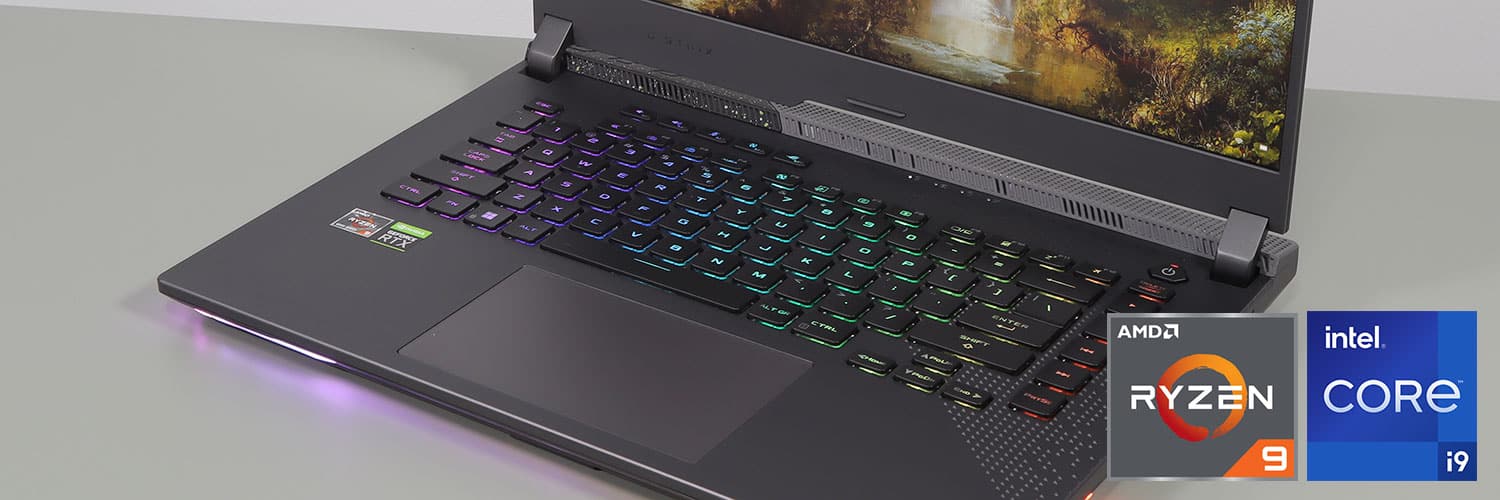

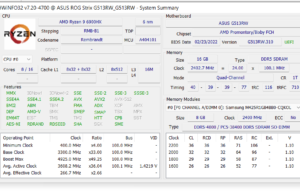
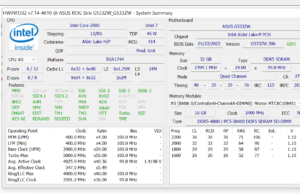
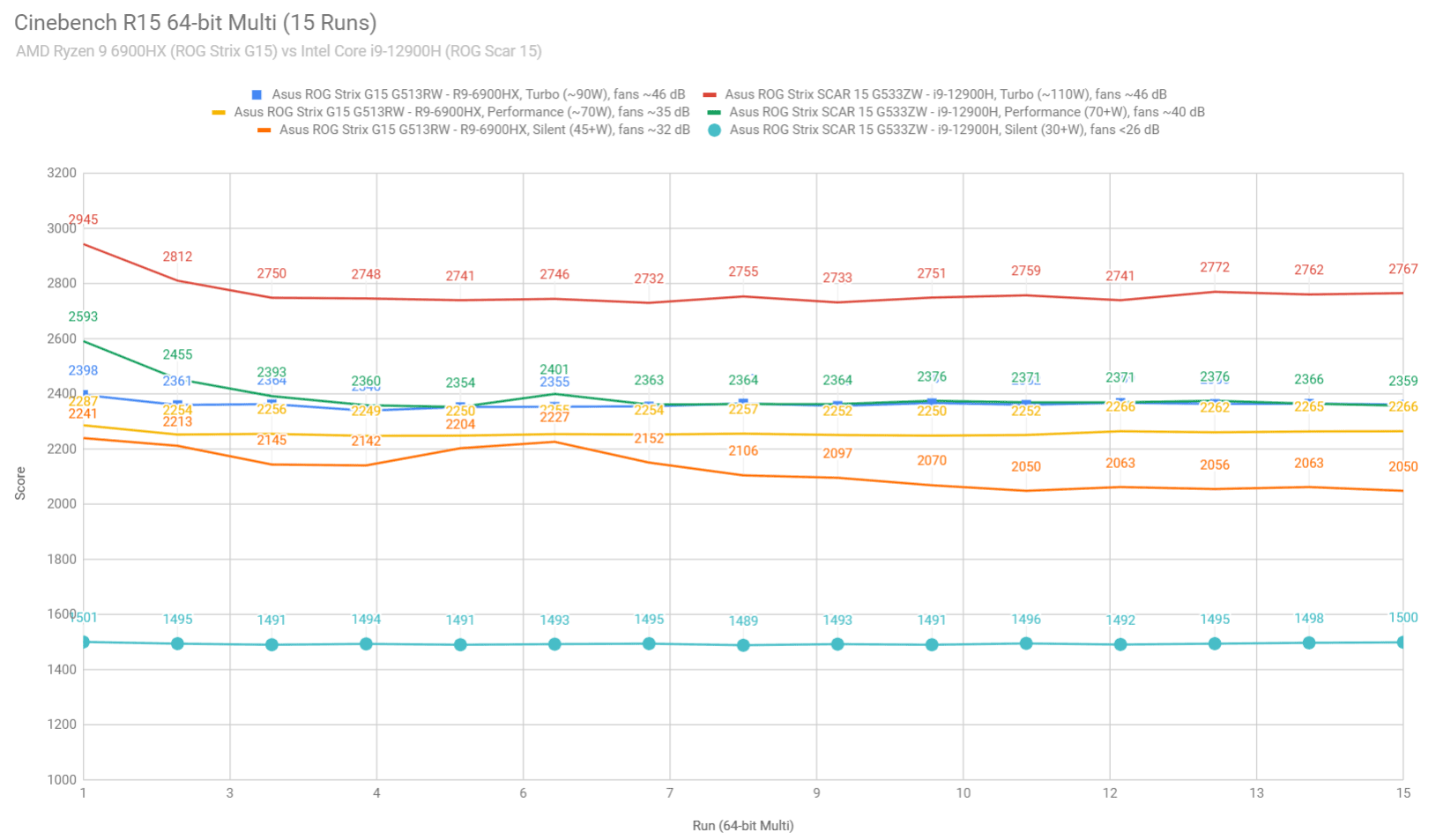
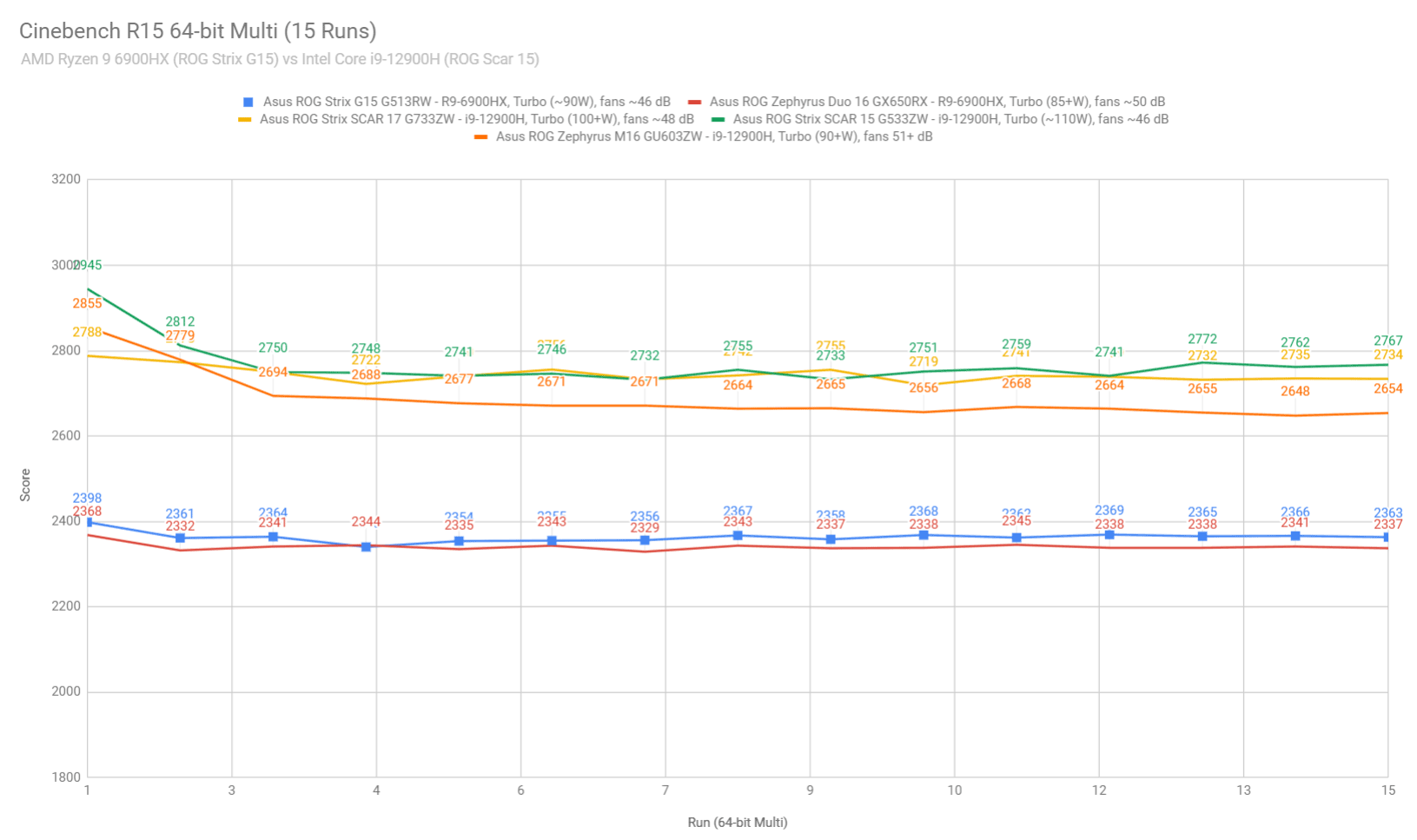
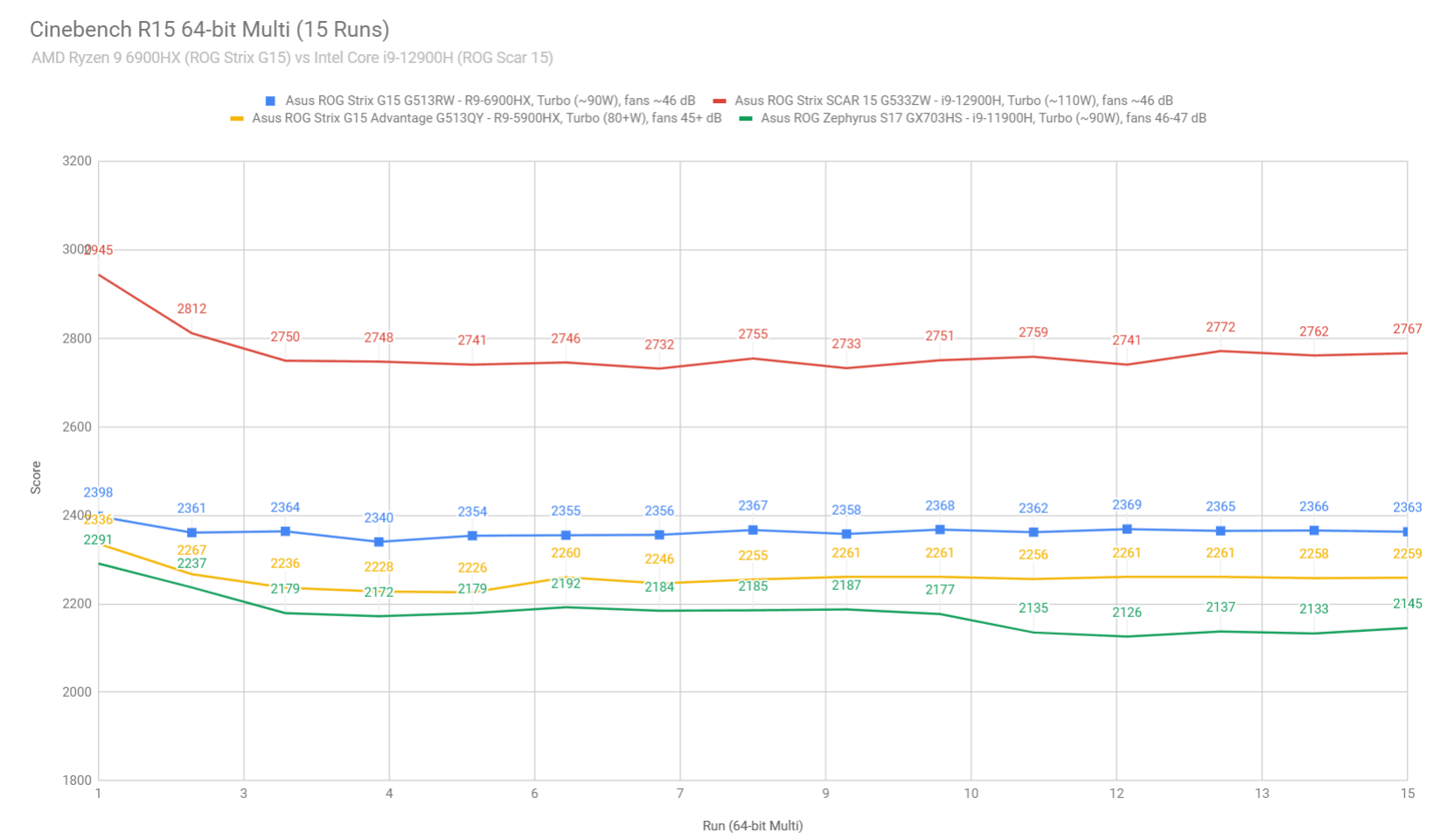
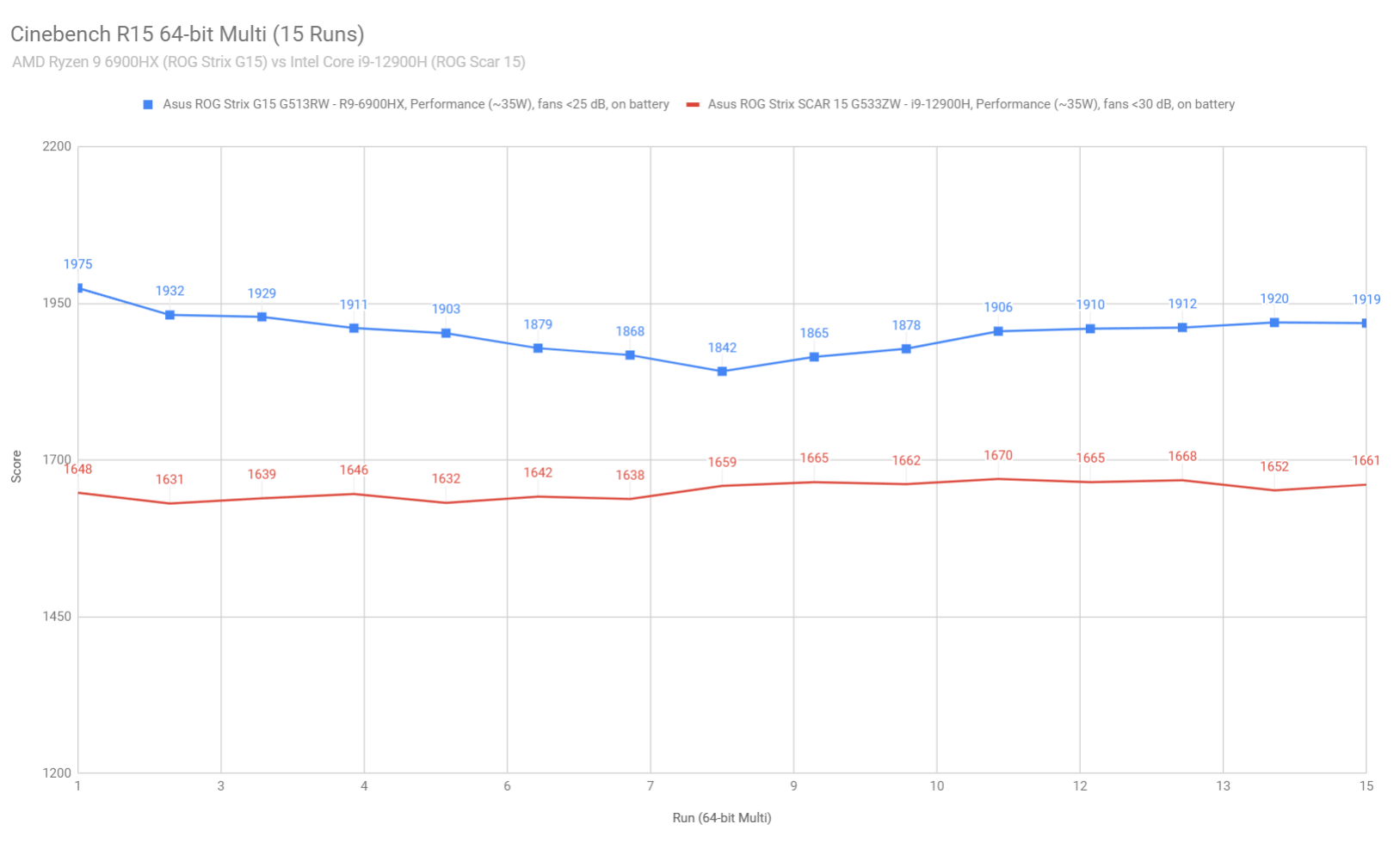



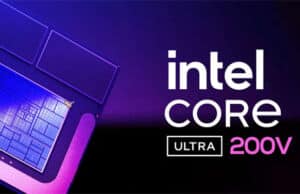
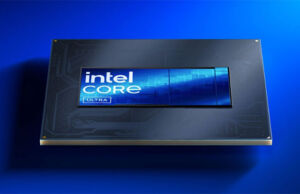
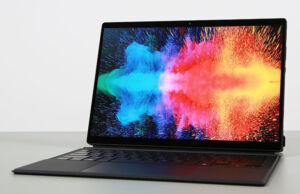
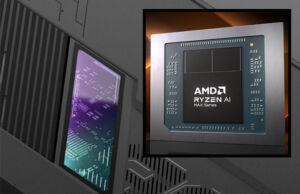
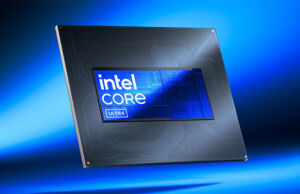




J
November 8, 2022 at 2:54 pm
There's a typo in the PCMark 10 benchmark? 77908 vs 7908? (:
PCMark 10 77347 (E – 10560, P – 9891, DCC – 11414) 7908 (E – 11112, P – 10174, DCC – 11870)
Andrei Girbea
November 8, 2022 at 3:03 pm
thank you, updated.
Shaho
November 8, 2022 at 11:59 pm
Hello, Ryzen 6000 series processors (zen3+) do not support DDR4 RAM.
Intel's Alder Lake H-series processors will allow you to use DDR5-4800, LPDDR5-5200, DDR4-3200, and LPDDR4x-4267. AMD's Ryzen 6000 series processors, however, are limited to just DDR5-4800 and LPDDR5-6400 RAM. While this may not directly affect the end consumers as the components are picked by the laptop OEMs, you may either have a hard time finding AMD 6000 series CPU-powered laptops in stocks or they might be a little expensive.
Source: The slides of Intel and AMD/ XDA Developer
Andrei Girbea
November 9, 2022 at 12:06 pm
You're right, thank you! Updated
martin
November 18, 2022 at 10:30 am
any chance to review amd version of legion7 and slim7?
Andrei Girbea
November 18, 2022 at 10:51 am
Most likely not. Lenovo don't have samples for us, and with new-gen hardware coming soon, buying these just for reviews isn't financially worth it for us.
I'll try to look into the AMD Legion 7, maybe I can squeeze it in by the end of the year. No promise, though.
NikoB
November 21, 2022 at 2:27 pm
Slim7 and L7 have already been reviewed at NB in AMD and Intel versions. L7 is the best all-round laptop with AMD (|Intel is the worst choice by huge noise level). But the L7 series has problems with panel stability in terms of contrast and light halos from backlit (Lenovo claims a minimum of 1200:1 in psref, but can’t find it in real copies by real tests with calibrators from reviews).
It is a pity that Lenovo on the L7 2022 platform with AMD processors does not release light versions with 3050/3060 (and 32Gb/2Tb config from factory) with price lower then 6800H/6700M – so many people buy this series not for games, but for work (company buy it in offices) and as a multimedia laptop for home, with a much lower price. And removing the parrot stupid illumination of the case, with which people suffer and immediately turn it off forever. It is better to spend this money on an improved cooling system (liquid metal) and more radiators.
Unfortunately, their Thinkbook 16p 2022 with AMD H line comes with soldered memory and a maximum of 32GB, and many already need 64. And there is a bad cooling system – this series makes noise even in an office load (L7 is not), and the set of ports is weaker than that of the L7.
Lenovo marketers do not really understand what people need, producing dozens of pointless series, instead of focusing on polishing 3-4 key series…